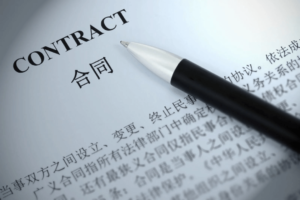Table of Contents
ToggleINTRODUCTION
In today’s competitive market, protecting your intellectual property is crucial. When it comes to design patents in China, you should remember a few key things to ensure a smooth application process and the protection of your design. In this article, we’ll discuss five critical factors to consider when applying for a design patent in China, from understanding the basics of design patents to tips for a successful application.
1. UNDERSTANDING DESIGN PATENTS
What is a design patent?
A design patent is a form of intellectual property protection covering a product’s unique appearance, shape, or configuration. Unlike utility patents that protect the functional aspects of an invention, design patents safeguard the aesthetic elements of a product or its packaging.
Design patent vs. utility patent
While design patents protect the appearance of a product, utility patents protect an invention’s functional aspects and technical innovations. Utility patents usually have a more extended protection period, but design patents can be obtained more quickly and are typically easier to enforce.
2. ELIGIBILITY CRITERIA FOR DESIGN PATENTS
Novelty and originality
To be eligible for a design patent in China, your design must be both novel and original. This means it should not have been publicly disclosed or used before and must significantly differ from existing designs.
Visual appeal
A key factor in obtaining a design patent is the visual appeal of your design. The product’s appearance should be aesthetically pleasing and capable of attracting consumers. Designs that are purely functional without any aesthetic considerations may not be eligible for a design patent.
3. THE APPLICATION PROCESS
Documentation
When applying for a design patent in China, you must provide a detailed design description accompanied by clear and concise illustrations. These illustrations should accurately depict the product’s appearance and any unique features that distinguish it from existing designs.
Patent Agent
Hiring a patent agent can help you navigate the complex application process. We will assist you in preparing your application and ensuring all requirements are met. This can save you time, effort, and potential legal complications down the road.
4. PROTECTING YOUR DESIGN PATENT
Enforcement
Once your design patent is granted, monitoring and enforcing your rights is crucial. This means monitoring the market for potential infringers and taking legal action when necessary. In China, design patent owners can pursue both administrative and judicial remedies to enforce their rights.
Duration
A design patent in China is valid for 15 years from the filing date. Keeping track of the patent’s expiration date is essential to ensure your design remains protected.
It is possible to renew a Chinese patent after the renewal deadline. If you do not pay the renewal fee by the due date, you have a 6-month grace period in which to make up the payments. When you enter the grace period, you will be charged an additional fee, which must be paid along with the renewal fee.
5. TIPS FOR A SUCCESSFUL APPLICATION
Thorough research
Before applying for a design patent, conduct thorough research to ensure your design is truly unique and original. This may include searching existing design patent databases, reviewing competitor products, and analyzing market trends. Ensuring your design is novel will increase the likelihood of a successful application.
Clear and concise illustrations
The quality of the illustrations submitted with your application can significantly impact the outcome. Ensure your illustrations are clear, concise, and accurately depict your design. It’s advisable to use a professional illustrator or drafting service to create high-quality drawings that effectively communicate the unique aspects of your design.
CONCLUSION
Applying for a design patent in China can be a complex and time-consuming process, but it’s essential for protecting your intellectual property. Understanding the key differences between design and utility patents, ensuring your design meets the eligibility criteria, and following the application process closely will improve your chances of obtaining a design patent. Remember to monitor and enforce your rights once your patent is granted to fully benefit from your intellectual property protection investment.
Frequently Asked Questions (FAQs)
1. What is a design patent? A design patent is a form of intellectual property protection that covers the unique visual appearance of a product, such as its shape, pattern, or overall look. It differs from a utility patent, which protects the functional aspects of an invention.
2. How is a design patent different from a utility patent? Design patents protect the aesthetic aspect of a product, whereas utility patents cover its functional and technical features. Design patents are generally quicker to obtain and easier to enforce compared to utility patents.
3. What are the eligibility criteria for a design patent in China? To qualify for a design patent in China, your design must be novel (not publicly disclosed or used before) and original (distinctly different from existing designs). Additionally, the design should have aesthetic value and not be purely functional.
4. What does the application process for a design patent in China involve? The application process requires submitting a detailed design description and clear illustrations that accurately represent the product’s appearance. It’s often advisable to engage a patent agent to navigate the complex process efficiently.
5. How do you enforce a design patent in China? Once granted, it’s important to monitor the market for potential infringements and take legal action if necessary. In China, patent owners can enforce their rights through administrative and judicial remedies.
6. What is the duration of a design patent in China? A design patent in China lasts for 15 years from the filing date. There is a 6-month grace period for late renewals, but this incurs additional fees.
7. What are some tips for a successful design patent application in China? Conduct thorough research to ensure your design is unique and original, and make sure your application includes high-quality, clear illustrations that effectively showcase your design’s unique aspects. Employing a professional illustrator or drafting service is often recommended.
8. Why is it important to have a design patent in China? Obtaining a design patent in China is crucial for protecting your intellectual property in a major global market. It ensures that the unique visual elements of your product are legally protected against unauthorized use or imitation.
9. Can a design patent be renewed in China? A design patent in China cannot be renewed beyond the 15-year term. However, if you miss the renewal deadline within this period, you have a 6-month grace period to renew, albeit with an additional fee.
Contact us if you need help with drafting of contracts that follows Chinese laws and are enforceable in China, background investigation of Chinese companies, protecting patents, trademarks, verification of contracts to the law in China, or help with other legal challenges that you have in China.
If you require our assistance or have further questions about our services, please do not hesitate to contact our Customer Relationship Managers Jan Erik Christensen, at janerik@ncbhub.com or Milla Chen, at huimin.chen@ncbhub.com. We look forward to hearing from you and helping your business succeed in China.








